For a floating gate MOSFET, in order to make the control gate work you have to(generally speaking) make the oxide layer thin(~100 Angstroms) as well as the ONO(Oxygen nitride, acts as an insulator) layer(~200 Angstroms). However, making it too thin causes electric leakage. What I want to know is, why does it seem like none of these limitations apply to the floating gate layer?
In a lot of schematics for FG-MOSFETS, the floating gate layer is always much bigger (~1500 Angstroms) than the Oxide and ONO layers. But making the FG thick only puts the control gate farther away, so it seems like it doesn't really matter how thick you make the FG, the same amount of charge passes through anyway, why is this? I know that you don't need a large threshold voltage since a charged floating gate interference between the CG and the semiconductor will increase the voltage differential in a cell that's been programmed. I'm guessing that it has something to do with conductivity, but I don't know enough about electrical engineering to be sure.
Sorry for the confusing post, but electronics isn't my major, so I don't know if I have all the terms correctly. Any help would be greatly appreciated.


